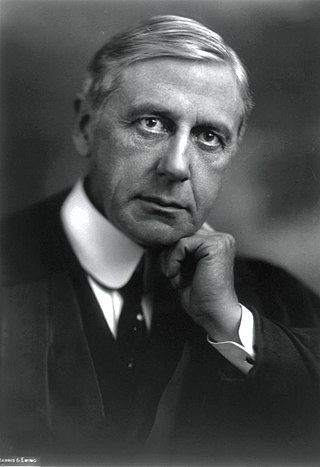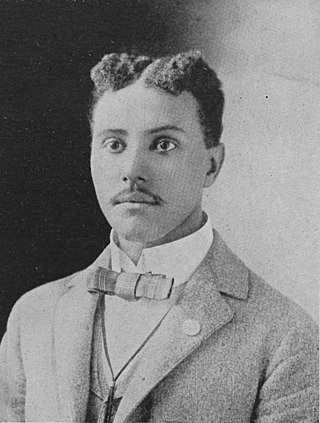
Mahlon R. Pitney IV was an American lawyer, jurist, and politician who served in the U.S. House of Representatives for two terms from 1895 to 1899. He later served as an associate justice of the U.S. Supreme Court from 1912 to 1922.
The Washington Star, previously known as the Washington Star-News and the Washington Evening Star, was a daily afternoon newspaper published in Washington, D.C., between 1852 and 1981. The Sunday edition was known as the Sunday Star. The paper was renamed several times before becoming Washington Star by the late 1970s.

Hubert Henry Harrison was a West Indian-American writer, orator, educator, critic, race and class conscious political activist, and radical internationalist based in Harlem, New York. He was described by activist A. Philip Randolph as "the father of Harlem radicalism" and by the historian Joel Augustus Rogers as "the foremost Afro-American intellect of his time." John G. Jackson of American Atheists described him as "The Black Socrates".

The Indianapolis Freeman (1884–1926) was the first illustrated black newspaper in the United States. Founder and owner Louis Howland, who was soon replaced by Edward Elder Cooper, published its first print edition on November 20, 1884.

William Calvin Chase was an American lawyer and newspaper editor. A native of Washington, D.C., he attended Howard University. As well as gaining admission to the bar, he edited the Washington Bee, a weekly newspaper, from 1882 until his death.
Day Pitney LLP is an American law firm with more than 300 attorneys spread across thirteen offices in six states and the District of Columbia.

Richard W. Thompson was a journalist and public servant in Indiana and Washington, D.C. He was at various times an editor or managing editor of the Indianapolis Leader, the Indianapolis World, the Indianapolis Freeman and the Washington D.C. Colored American. He was published as a general correspondent in The Colored American, The Washington Post, the Indianapolis Freeman, the Indianapolis World, Atlanta Age, Baltimore Afro-American Ledger, the Cincinnati Rostrum, the Charleston West Virginia Advocate, the Philadelphia Tribune and the Chicago Monitor. His longest-lasting relationship was with the Indianapolis Freeman. In 1896, the black paper, The Leavenworth Herald, edited by Blanche Ketene Bruce, called Thompson the "best newspaper correspondent on the colored press."
The following is a timeline of the history of Washington, D.C., the capital city of the United States.

The Taft Court refers to the Supreme Court of the United States from 1921 to 1930, when William Howard Taft served as Chief Justice of the United States. Taft succeeded Edward Douglass White as Chief Justice after the latter's death, and Taft served as Chief Justice until his resignation, at which point Charles Evans Hughes was nominated and confirmed as Taft's replacement. Taft was also the nation's 27th president (1909–13); he is the only person to serve as both President of the United States and Chief Justice.
More than 405 newspapers were founded in Washington, D.C., during the 18th and 19th centuries. They included daily, weekly, and monthly newspapers, mostly published in English, with a few in German and one in French. Many reported on news of national government affairs, since Washington, D.C., is the capital seat of the United States of America. Thomas Jefferson helped establish some of the early newspapers. During the American Civil War, some newspapers were founded and published in military camps and hospitals within Washington, D.C., including Brookland, Tenleytown, Carver General Hospital, Finley General Hospital, Armory Square Hospital, and Kalorama. Most of these newspapers ceased publication before 1900, but a few survived to the 20th century, including the Evening Star, and at least one to the 21st century: The Washington Post.

Arthur Glenn Froe was an American lawyer and politician. He was appointed by President Warren G. Harding as the Recorder of Deeds for the District of Columbia, and served in this position from 1922 to 1930 during the presidential administrations of Harding, Calvin Coolidge, and Herbert Hoover.
Rev. Dr. Robert Simon Laws, a formerly enslaved person and Howard University graduate, founded two African American Baptist churches in the 19th century that have active congregations in the 21st century.







